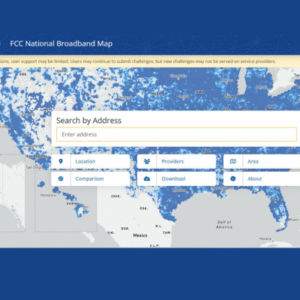Large Apartments and Townhomes in the Capital Region 2023
Disclaimer: the following map uses data adapted from the Albany Business Review’s June 23-29 2023 list of Apartments and Townhome Communities (https://www.bizjournals.com/albany/subscriber-only/2023/06/23/largest-apartment–townhouse-communities-in-the-albany-area.html). The survey area includes Albany, Columbia, Fulton, Green, Montgomery, Rensselaer, Saratoga, Schenectady, Schoharie, Warren, and Washington Counties. Source: Listings on apartment community websites and from Apartments.com. These locations are not independently verified.
The Albany Business Review recently published a list of the top 25 Apartments and Townhome Complexes based on the number of units as of June 23rd, 2023. To visually represent these complexes, a map has been created using proportionate symbols. Each complex is represented by a dot on the map, and the size of the dot corresponds to the number of units in that complex. To explore more details about each complex, simply click on the dots on the map.
In recent years, the Capital Region has had a notable increase in multi-family development beyond the major cities. This is exemplified in the Albany Business Review’s recent article, where 21 out of the 25 (84%) of largest apartment complexes are outside of the major cities (Albany, Rensselaer, Schenectady, Troy, and Saratoga Springs) in the Capital Region. This trend signifies a shift from the traditional suburban housing landscape, which has predominantly been single-family homes. The construction of multi-family development far from services may pose challenges for communities, including strain on infrastructure, services and increased traffic. Despite challenges, this trend responds to demographic shifts in household make up, a dynamic labor market, and a demand for more affordable housing opportunities in areas historically dominated by single family homes.
The data used for this video is sourced from the 2021 NYS Tax Parcel Centroid Points provided by the NYS Clearinghouse. The dataset can be accessed at https://data.gis.ny.gov/datasets/sharegisny::nys-tax-parcel-centroid-points/about. The visualization utilizes the 411 (Apartments) code, to represent the growth of large multi-family developments.
Out of the 1,538 apartments built between 1940 and 1980, 1,068 (69.4%) of them were built outside the major cities of the Capital Region (Albany, Rensselaer, Schenectady, Troy and Saratoga Springs). From 1980 to 2020, 1,398 of 1,713 (81.6%) apartments were built outside of those same major cities. An increase of 12.2% over the two time periods. This analysis relies on the 2021 Tax Parcel Centroid Points provided by the NYS Clearinghouse and uses the code 411 to show apartments in the Capital Region.
Why the Burbs?
As displayed by the arial photography, the majority (but not all) of these complexes are situated in suburban communities, surrounded by parking lots, other suburban neighborhoods, or green spaces. This development pattern is prevalent in many regions because suburban areas offer attractions like available land, lower land costs, and a perception of a peaceful, family-friendly atmosphere. Moreover, developers may find suburban areas more convenient and profitable for extensive housing projects due to favorable zoning regulations and more space to build.
Suburban sprawl refers to the uncontrolled, low-density expansion of urban areas into neighboring rural or undeveloped lands. It typically involves the development of single-family homes, shopping centers, and commercial areas spread out over a large geographic area, often characterized by auto-dependent transportation systems. However, apartment and townhome complexes can also contribute to urban sprawl if they are spread out over large areas, lack connectivity to essential services and public transportation, and relies heavily on individual cars for commuting.
Smart Growth
Municipalities in the Capital Region can help refocus high density development in strategic areas of their choosing by using smart growth principles. In turn, lessening the impacts of urban/suburban sprawl. The Smart Growth Network developed 10 guiding principles to promote smart growth strategies:
- Mix land uses.
- Take advantage of compact building design.
- Create a range of housing opportunities and choices.
- Create walkable neighborhoods.
- Foster distinctive, attractive communities with a strong sense of place.
- Preserve open space, farmland, natural beauty, and critical environmental areas.
- Strengthen and direct development towards existing communities.
- Provide a variety of transportation choices.
- Make development decisions predictable, fair, and cost effective.
- Encourage community and stakeholder collaboration in development decisions.
Some examples of smart growth practices include:
- Conserving resources by reinvesting in existing infrastructure and rehabilitating historic buildings.
- Designing neighborhoods that have homes near shops, offices, schools, houses of worship, parks, and other amenities, giving residents and visitors the option of walking, bicycling, taking public transportation, or driving as they go about their business.
- Providing a range of different housing types to make it possible for senior citizens to stay in their neighborhoods as they age, young people to afford their first home, and families at all stages in between to find a safe, attractive home they can afford.
- Enhancing neighborhoods and involving residents in development decisions, creating vibrant places to live, work and play.
Sources:
Kehoe, T. (2023, June 23). Largest Apartment & Townhouse Communities in the Albany Area. Albany Business Journal. https://www.bizjournals.com/albany/subscriber-only/2023/06/23/largest-apartment–townhouse-communities-in-the-albany-area.html
Smart Growth Online. (n.d.). Smart Growth Principles. https://smartgrowth.org/smart-growth-principles/
U.S. Environmental Protection Agency. (n.d.). Smart Growth Illustrated. https://www.epa.gov/smartgrowth/smart-growth-illustrated


